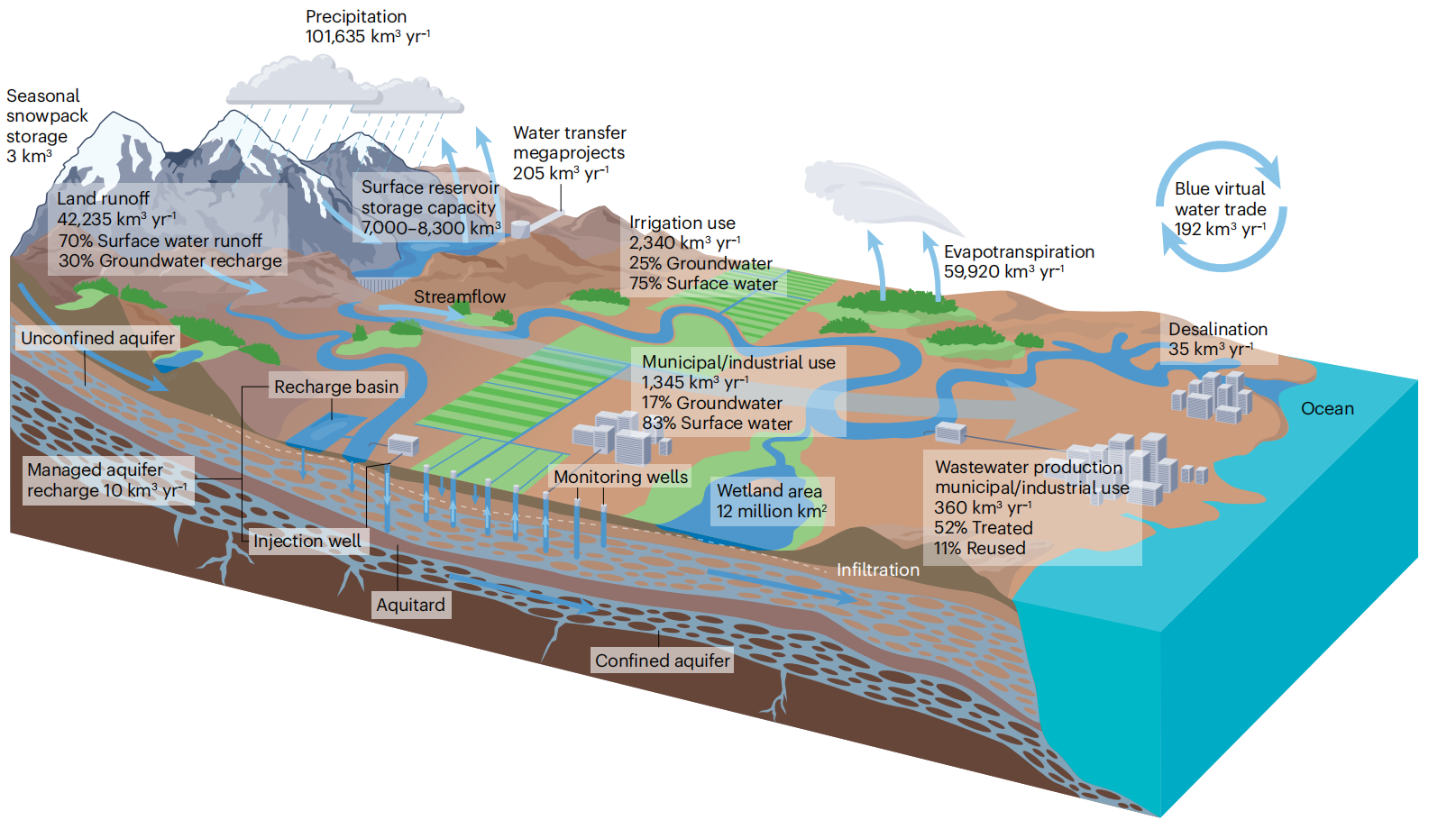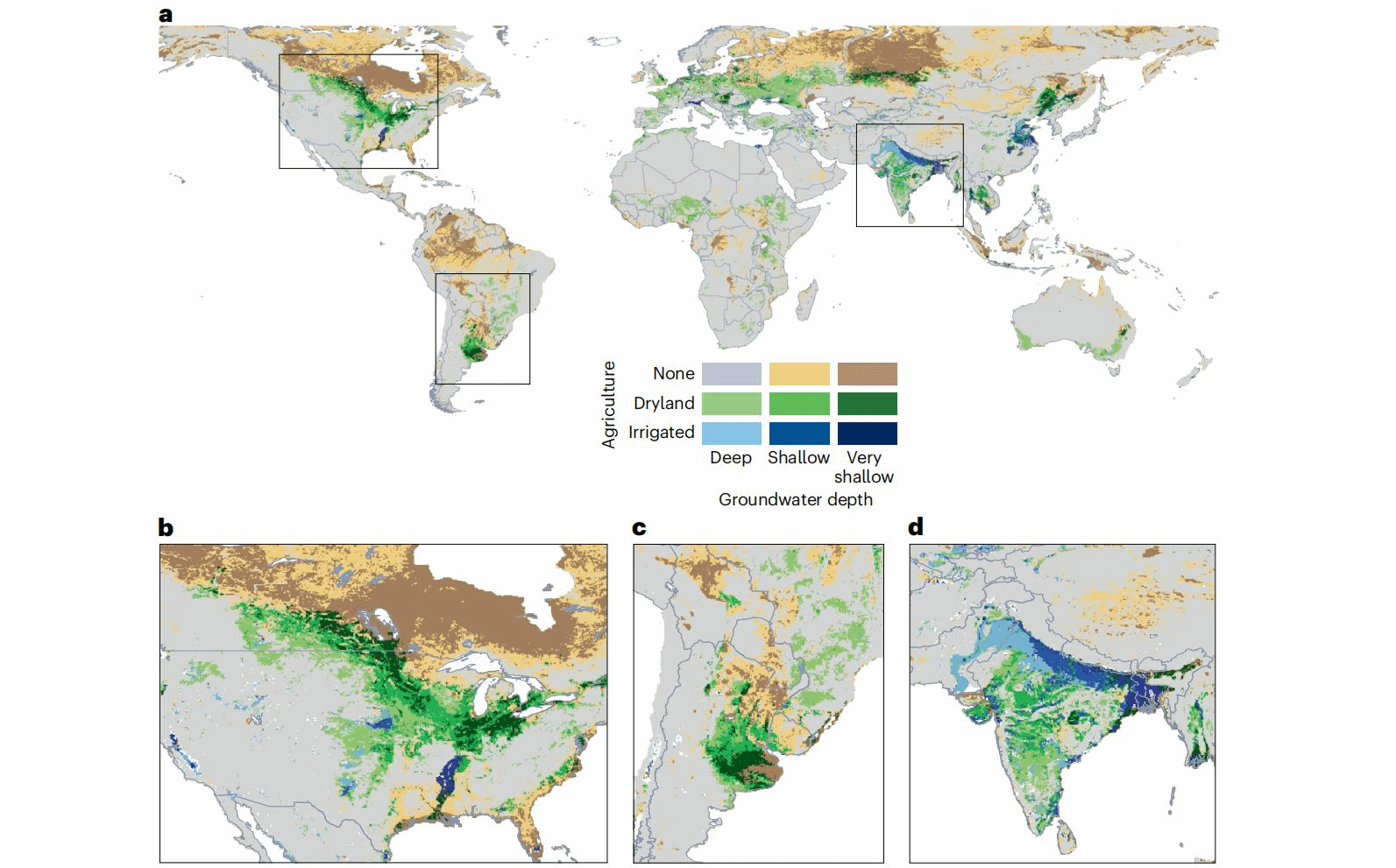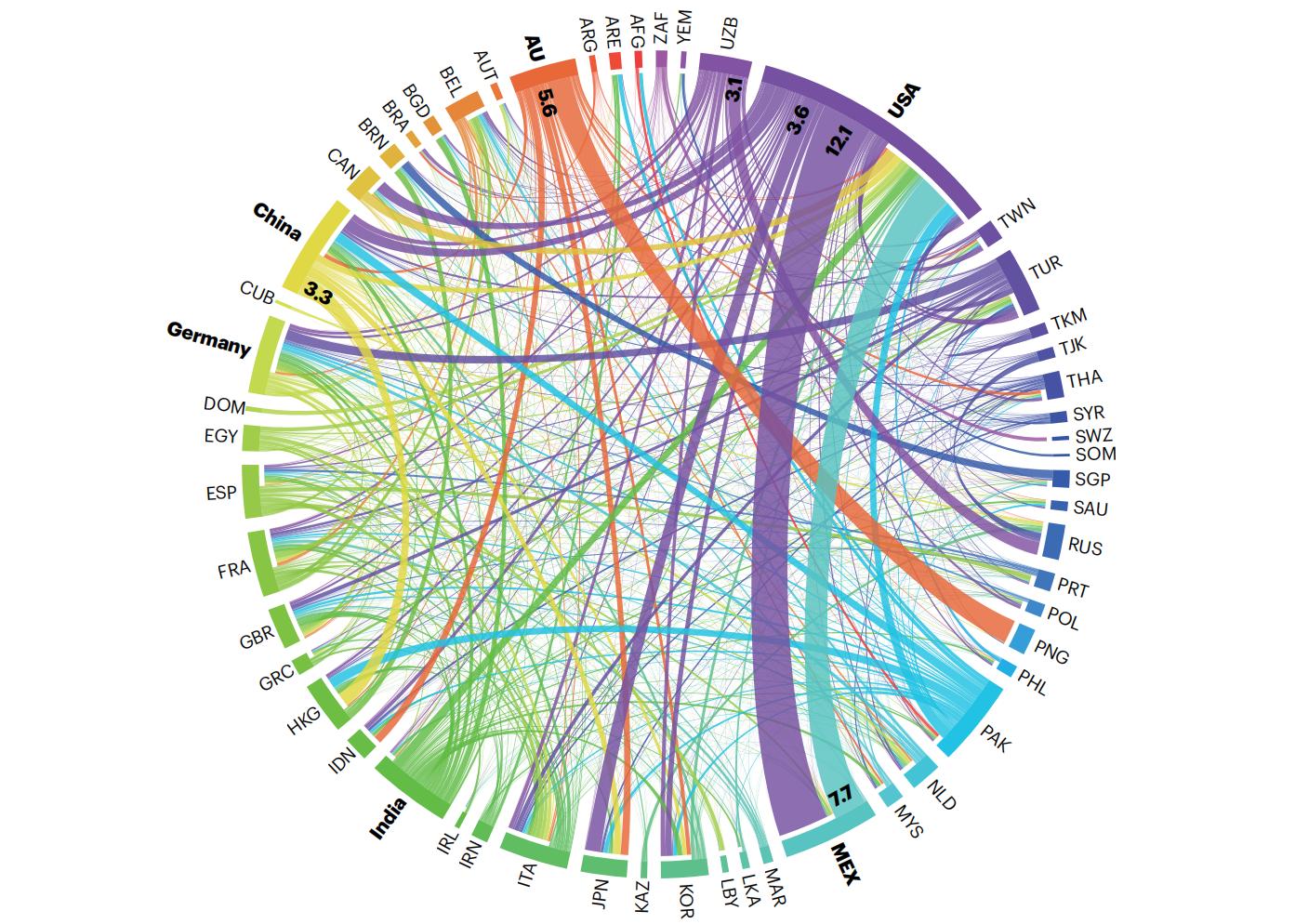文章信息:Bridget R. Scanlon, Sarah Fakhreddine, Ashraf Rateb, Inge de Graaf, Jay Famiglietti, Tom Gleeson, R. Quentin Grafton, Esteban Jobbagy, Seifu Kebede, Seshagiri Rao Kolusu, Leonard F. Konikow, Di Long, Mesfin Mekonnen, Hannes Müller Schmied, Abhijit Mukherjee, Alan MacDonald, Robert C. Reedy,Mohammad Shamsudduha, Craig T. Simmons,Alex Sun, Richard G. Taylor, Karen G. Villholth, Charles J. Vörösmarty & Chunmiao Zheng. (2023). Global water resources and the role of groundwater in a resilient water future. Nature Reviews Earth & Environment, 4(2): 87-101, https://doi.org/10.1038/s43017-022-00378-6.
整理人:杨文,2023级硕士生
整理时间:2024年4月22日
Abstract: Water is a critical resource, but ensuring its availability faces challenges from climate extremes and human intervention. In this Review, we evaluate the current and historical evolution of water resources, considering surface water and groundwater as a single, interconnected resource. Total water storage trends have varied across regions over the past century. Satellite data from the Gravity Recovery and Climate Experiment (GRACE) show declining, stable and rising trends in total water storage over the past two decades in various regions globally. Groundwater monitoring provides longer-term context over the past century, showing rising water storage in northwest India, central Pakistan and the northwest United States, and declining water storage in the US High Plains and Central Valley. Climate variability causes some changes in water storage, but human intervention, particularly irrigation, is a major driver. Water-resource resilience can be increased by diversifying management strategies. These approaches include green solutions, such as forest and wetland preservation, and grey solutions, such as increasing supplies (desalination, wastewater reuse), enhancing storage in surface reservoirs and depleted aquifers, and transporting water. A diverse portfolio of these solutions, in tandem with managing groundwater and surface water as a single resource, can address human and ecosystem needs while building a resilient water system.
摘要:水是一种关键资源,但确保其可用性却面临着极端气候和人类干预的挑战。在这篇综述中,我们梳理了水资源的当前和历史演变,将地表水和地下水视为一种单一的、相互关联的资源。在过去的一个世纪里,各地区的总蓄水量趋势各不相同。重力恢复和气候实验(GRACE)的卫星数据显示,过去20年来,全球各地区的总蓄水量呈下降、稳定和上升趋势。地下水监测提供了过去一个世纪的长期背景,显示印度西北部、巴基斯坦中部和美国西北部的蓄水量上升,美国高平原和中央山谷的蓄水量下降。气候变化会导致蓄水量发生一些变化,但人类干预,尤其是灌溉,是一个主要驱动因素。可以通过多样化的管理战略来提高水资源的复原力。这些方法包括绿色解决方案,如森林和湿地保护,以及灰色解决方案,例如增加供应(海水淡化、废水再利用)、加强地表水库和枯竭含水层的储存以及运输水。这些解决方案的多样化组合,再加上将地下水和地表水作为一种单一资源进行管理,可以满足人类和生态系统的需求,同时建立一个有弹性的供水系统。

图 全球水循环及全球尺度各水储量和通量的年值

图 农业发展与地下水深度的关系
a、全球地图。b、 美国和加拿大。c、 南美洲的潘帕斯和查科地区。d、 印度和巴基斯坦。如果耕地面积超过细胞面积的30%,则细胞被归类为农业细胞。灌溉农业是根据灌溉面积≥30%的小区面积估算的。地下水深度≤3 m、 3–10 m和>10 m分别对应于非常浅的、浅的和深的地下水。

图 全球虚拟水流量带来的水资源流通
国家之间的蓝色虚拟水流(单位:km3 yr−1)基于1996-2005年的分析。链接的颜色与出口国相对应。
结论:
把地表水和地下水作为一个相互联系的整体对于水资源管理至关重要。地下水在水资源弹性方面起着关键作用,也更容易受到管理不善以及过度开发的影响。应当通过联合管理地表水和地下水,并开发替代水源,为水资源系统建立冗余和弹性。
卫星数据的增加、全球和区域建模的进展以及地面监测网络的扩大,使人们对水资源量的认识和理解有了很大进展。然而,由于尚没有建立全球性的水质监测系统,大部分国家都没有定期收集水质数据,这仍然是评估水资源领域的一个重大难题。
随着对气候驱动因素和水资源过度开发的认识加深,未来的水资源管理将会更加有效。这不仅有利于增强水资源应对各类影响因素的弹性,而且将使生态系统和人类的共同利益最大化。
总之,并没有单一的、放之四海而皆准的解决方案来实现具有弹性的水资源系统。具体方法(如增加供水、减少用水需求、蓄水、调水)的相对重要性,即使在同一地区也会因当地用水情况而有所不同。但是,无论采用何种具体方法,将地下水和地表水作为一个整体进行管理都是至关重要的。
原文链接:https://www.nature.com/articles/s43017-022-00378-6
节选转引:https://mp.weixin.qq.com/s/lDQ5WlAnzHK-vbA-KxWIXw